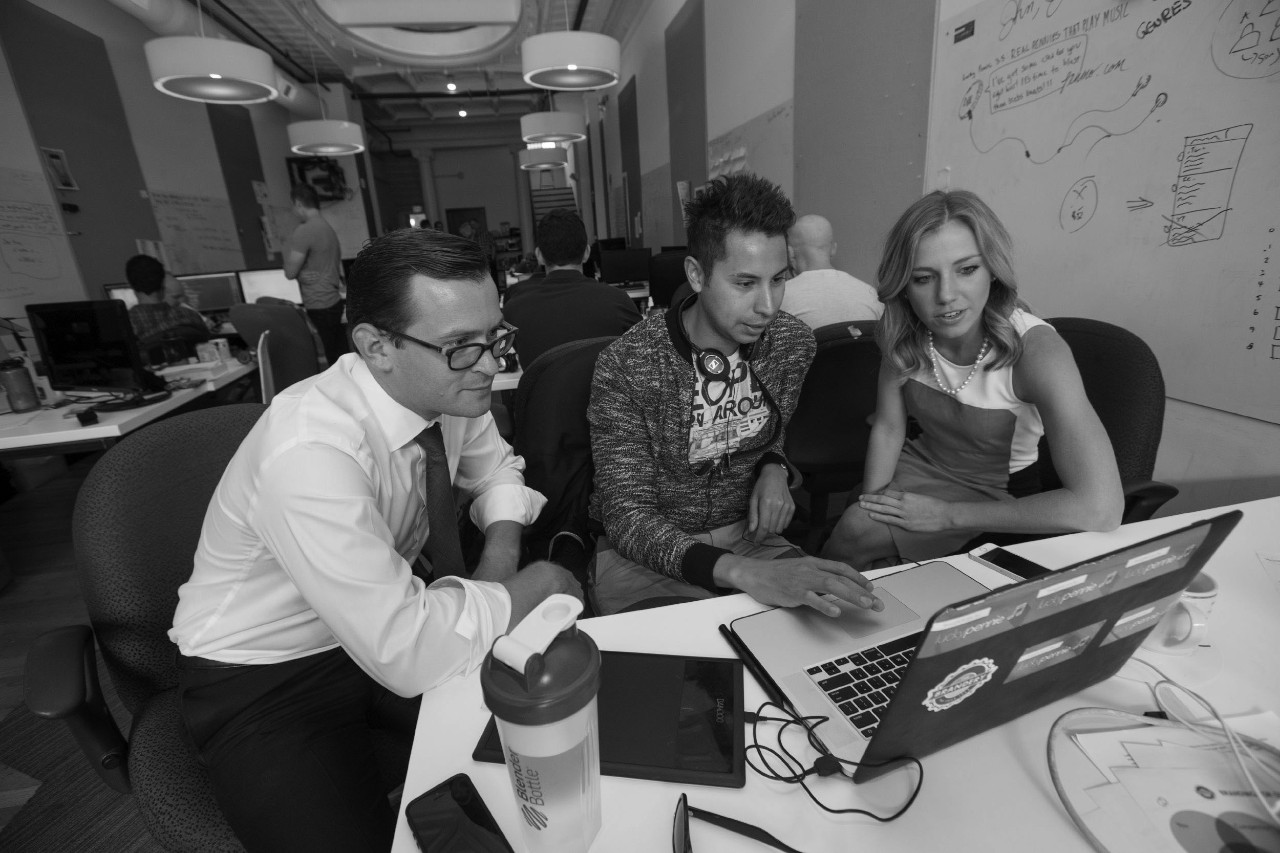
Why wait to change the world?
How Cincinnati uses innovation to make meaningful connections, on campus and beyond
Students who forge bonds with each other and their communities are more successful than students who don’t. That’s why University of Cincinnati educators ask every day: How can innovation and technology create a deeper sense of community on a campus of 46,000 students?
Frank Russell, director of the university’s UC Forward initiative, does that by bringing students directly into local neighborhoods. They don’t just learn a lot about Cincinnati. They get a chance to put their ideas to work.
“Look, you can sit in a classroom and study formulas and theories — which you need to do — or you can come with me and apply those formulas and theories to real problems, in the real world, with a real-world collaborator,” says Russell. “Why wait to change the world if you don’t have to?”
That question guides UC Forward and every aspect of experience-based learning at UC. Which only makes sense — University of Cincinnati invented cooperative education in 1906, and it remains on the short list of the nation’s top 20 schools for co-op and internships. Today, 1,800 national and international organizations partner with UC to create opportunities for beyond-the-classroom learning.
“When I hear that faculty are doing research in a certain area that has relevance to the community and they've got a grant, I chase after them and see if they can connect the research to a classroom experience,” says Russell, an architect by training.

One UC Forward project, for example, laid the groundwork for the city’s emerging Innovation Corridor. Architects, engineers and designers were involved, as you’d expect — but so were anthropologists and historians.
Such interdisciplinary collaborations are central to UC’s innovation agenda. Support from its 1819 Innovation Hub and the Entrepreneurship Bearcat Launchpad, the nation’s first student-led business accelerator, provides opportunities for students to pursue their passion before they graduate. And while forward-leaning initiatives are part of the reason Cincinnati was named among the world’s 100 most innovative universities (Reuters), they’re also a catalyst for confidence.
“Students who’ve had an interaction with the community come away from these courses feeling like they had an impact,” Russell says. “And conversely, within the community, the students are actually more effective ambassadors than the faculty. Stakeholders are much more likely to listen to students, appreciate their ideas and trust them a little bit more. It empowers students in a way that no academic course can on its own.”
While students make the world their classroom, Cincinnati is working to boost on-campus learning as well. “One of our challenges is to create a more personalized experience,” says Bryan Smith, director of UC’s Center for the Engagement of Teaching and Learning. “For first-year students in a large-enrollment class, it’s important to increase the frequency and improve the quality of student-to-student and faculty-to-student connections.”
UC is introducing physical models that encourage interaction as well. In the new $120 million Carl H. Lindner College of Business facility, for example, many spaces look more like cafés than traditional classrooms. Instead of rows of desks, tables surround the instructor’s console. And students are able to share their laptop screen with the class.
“It’s students solving problems together and collaborating with a professor as a facilitator rather than as a lecturer,” Smith says.
And data proves the classrooms make a difference. Students say they’re closer to each other and to faculty, get better grades and are more comfortable with what they’re learning.
“More and more, we’re learning — and research confirms — that the quality of the educational experience depends entirely on the quality of interaction,” Smith says.
Request more information
Related Stories
We love ‘Lucy’ — the AI avatar redefining UC tech transfer
July 17, 2024
In a visionary leap at the University of Cincinnati, the marriage of artificial intelligence and interactive technology has birthed "Lucy," a Smarthelp AI avatar poised to revolutionize how regional industries engage with UC's tech transfer initiatives.
NIS program opens new horizons for international student
July 17, 2024
In his pursuit of physics and a taste for research, Akash Khanikor ventured from his hometown in India's Assam to the University of Cincinnati, drawn by the promise of hands-on exploration early in his undergraduate career as a NEXT Innovation Scholar.
Camp aims to empower children, teens who stutter
July 17, 2024
A one-week, evidence-based program for children and teens who stutter at the University of Cincinnati will teach kids to communicate effectively, advocate for themselves and develop confidence about their communication abilities. Camp Dream. Speak. Live., which is coming to Cincinnati for the first time July 22-26, began in 2014 at the University of Texas at Austin. The Arthur M. Blank Center for Stuttering Education and Research at UT expects to serve more than 2,000 children at camps across the United States, Africa, Asia and Europe this year.